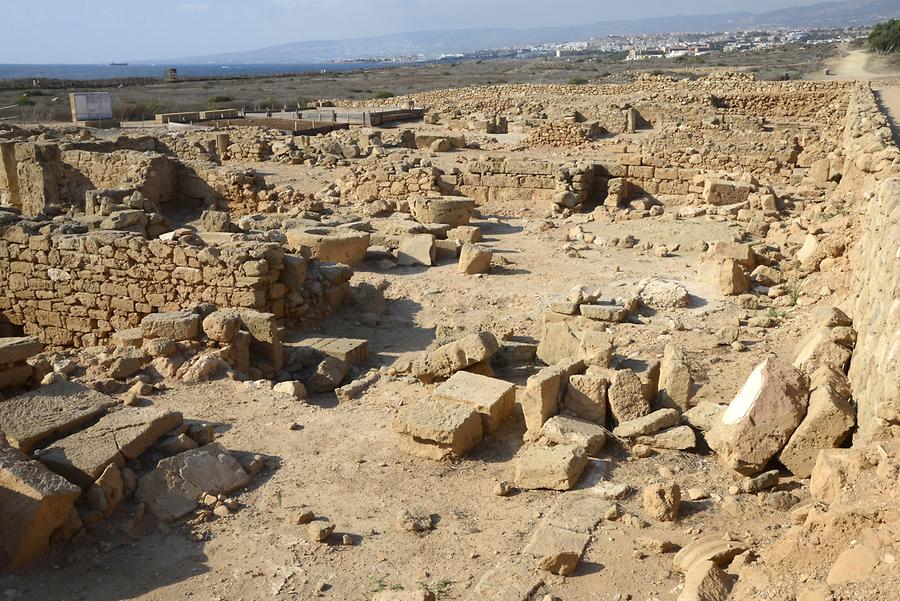Paphos Archaeological Park#

Paphos Archaeological Park, September 2016, © Gerhard Huber, under CC BY-NC 4.0 +Edu
Cyprus' - after Agia Napa and Limassol - third large tourist area embraces the ancient Paphos
Paphos, Cyprus
like an octopus. During the summer months crowds of tourists are romping about, making the 42,000 inhabitants of Paphos a minority. As a kind of counterbalance to myriads of bars and restaurants, the impersonal provincial metropolis has at least a lot to offer in historical terms. As early as 312 BC., Nikolaos, powerful priest-king of Paphos, decided to undertake the enlargement of the harbour in order to promote the economic power of his city kingdom. Prospectively, he ordered to create a whole city - this marked the birth of Nea Paphos. The town quickly developed into a busy commercial metropolis, which was further developed by the Egyptian Ptolemies and eventually became the capital of the province of Cyprus under the Roman Empire. But apart from the reconstructed Odeion, the former town hall, the ancient excavation site is a pitiable sight. Nevertheless, it is protected as a UNESCO World Heritage Site because the Roman officials and merchants had built here villas whose mosaic floors were the most beautiful thing that ancient Rome had to offer in this regard. The House of Theseus had 9600 m² of living space. Until today, only 1,400 m² of mosaic floors have been released.
uncovered.
Zyperns – nach Agia Napa und Limassol - dritte große Touristenzone umschließt das antike Paphos
Paphos, Cyprus
wie eine Krake. In den Sommermonaten tummeln sich hier Massen an Touristen, die die 42.000 Einwohner von Paphos zur Minderheit machen. Neben unzähligen Bars und Restaurants hat die gesichtslose Provinzmetropole wenigstens historisch einiges zu bieten. Schon 312 v.d.Z. beschloss Nikolaos, mächtiger Priesterkönig von Paphos, mit dem Ausbau des Hafens zu beginnen, um die Wirtschaftskraft seines Stadtkönigreiches zu fördern. Weitsichtig ließ er dort gleich eine ganze Stadt anlegen, die Geburtsstunde von Nea Paphos. Schnell entwickelte sich der Ort zur geschäftigen Handelsmetropole, die von den ägyptischen Ptolemäern weiter ausgebaut und unter den Römern schließlich zur Hauptstadt der Provinz Zypern gemacht wurde. Doch abgesehen vom rekonstruierten Odeion, dem einstigen Rathaus, vermittelt die antike Ausgrabung einen bescheidenen Anblick. Trotzdem genießt sie UNESCO-Welterbe-Schutz, denn die Römischen Beamten und Kaufleute ließen sich hier Villen errichten, deren Mosaikfußböden zum schönsten gehört, was das antike Rom in dieser Richtung zu bieten hatte. Das Haus des Theseus brachte es auf 9600 m² Wohnfläche. Bisher wurden allein hier 1400 m² Mosaikfußböden freigelegt.